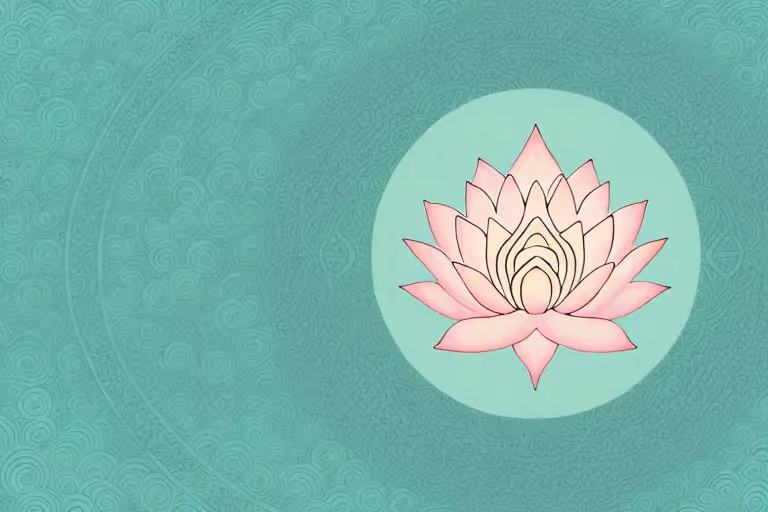Embodied Meditation is an innovative approach to mindfulness that goes beyond simply focusing on the mind. It involves integrating mindfulness into the body, creating a powerful synergy between the two. By bringing our attention to the sensations and movements of the body, we can deepen our mindfulness practice and experience a profound sense of presence and wholeness.
Understanding Embodied Meditation
Embodied Meditation is rooted in the concept that the body and mind are intimately connected. It recognizes that our physical experiences can deeply influence our mental and emotional states. By turning our attention to the body during meditation, we can cultivate a greater awareness of this mind-body connection.
The practice of Embodied Meditation involves bringing our attention to bodily sensations, such as the feeling of the breath, bodily tensions, or the subtle movements happening within. By observing these sensations with curiosity and non-judgment, we can develop a deep sense of self-awareness and presence.
Embodied Meditation encourages us to explore the intricate relationship between our physical and mental experiences. As we delve deeper into our practice, we may begin to notice the subtle interplay between our thoughts, emotions, and bodily sensations. For example, we might observe how a stressful thought triggers tension in our shoulders or how a sense of calmness in our body can lead to a more peaceful state of mind.
The Concept of Embodied Meditation
The concept of Embodied Meditation is grounded in the belief that the body is a vital gateway to present moment awareness. When we direct our attention to the body, we anchor ourselves in the here and now, allowing us to fully inhabit our experience.
Embodied Meditation invites us to explore the rich tapestry of sensations that arise within our bodies. We may notice the gentle rise and fall of our chest as we breathe, the warmth or coolness of our skin, or the subtle pulsations of energy flowing throughout our limbs. By attuning ourselves to these bodily experiences, we can cultivate a deep sense of grounding and presence.
Through Embodied Meditation, we can also develop a greater appreciation for the wisdom held within our bodies. Our bodies carry a wealth of information and insights that can guide us in navigating our lives. By listening to the whispers of our bodies, we can tap into a wellspring of intuition and inner guidance.
The Connection Between Mindfulness and the Body
Embodied Meditation recognizes that the body can serve as a powerful anchor for our mindfulness practice. By focusing on the body, we can become more attuned to its subtle signals and cues, allowing us to respond more skillfully to our experiences.
As we deepen our practice of Embodied Meditation, we may discover that our bodies hold valuable clues about our emotional well-being. For example, we might notice how a tightness in our chest corresponds to feelings of anxiety or how a sense of lightness in our stomach signifies a state of joy. By paying attention to these bodily sensations, we can gain valuable insights into our emotional landscape.
Research has shown that incorporating body-based mindfulness practices, such as Embodied Meditation, can lead to decreased stress, improved emotional regulation, and increased self-compassion. By cultivating a deeper connection with our bodies, we can tap into a wellspring of inner resources to support our well-being.
Embodied Meditation offers a holistic approach to mindfulness, integrating the wisdom of both the mind and body. By embracing this practice, we can embark on a transformative journey of self-discovery and self-care.
The Benefits of Embodied Meditation
Embodied Meditation offers a multitude of benefits for both our physical and mental health. By integrating mindfulness into the body, we can experience a profound transformation in our well-being.
Physical Health Advantages
Embodied Meditation has been linked to a wide range of physical health benefits. Research has shown that regular practice can help reduce chronic pain, enhance immune function, and improve sleep quality. By turning our attention inward and becoming more attuned to our bodies, we can cultivate a greater sense of vitality and well-being.
Mental Health Improvements
Embodied Meditation has also been shown to have significant mental health benefits. Studies have demonstrated that regular practice can reduce symptoms of anxiety and depression, enhance emotional regulation, and increase overall well-being. By practicing Embodied Meditation, we can gain greater insight into our own patterns of thinking and behaving, leading to greater self-awareness and emotional resilience.
The Process of Embodied Meditation
Embodied Meditation is not a one-size-fits-all practice. It can be adapted to suit individual needs and preferences. However, there are some general guidelines that can help us deepen our practice and integrate mindfulness into our bodies.
Preparing for Embodied Meditation
Before beginning Embodied Meditation, it is helpful to create a conducive environment that supports concentration and relaxation. Find a quiet space where you can sit or lie down comfortably. Set aside dedicated time for your practice, free from distractions. Consider using props such as cushions or blankets to support your body in a relaxed and upright posture.
Techniques for Integrating Mindfulness into the Body
There are numerous techniques that can be used to integrate mindfulness into the body during meditation. One common approach is to focus on the breath, observing its natural rhythm and the subtle sensations it generates in the body. Another technique is body scanning, where attention is systematically directed to different parts of the body, noticing any sensations or tensions that arise.
Embodied Movement practices, such as yoga or Tai Chi, can also be incorporated into our meditation routine. By mindfully engaging in gentle movements, we can develop a deeper connection with our bodies and heighten our overall sense of presence.
Overcoming Challenges in Embodied Meditation
Embodied Meditation, like any mindfulness practice, can present challenges along the way. It is important to approach these difficulties with patience and self-compassion. By acknowledging and working through these challenges, we can cultivate a more resilient and sustainable practice.
Common Difficulties in Practicing Embodied Meditation
One common difficulty in Embodied Meditation is restlessness or physical discomfort. It can be challenging to sit still and maintain focus on the body for an extended period. It is important to approach these sensations with curiosity and kindness, making adjustments as needed and allowing the body to find its own comfortable balance.
Another challenge is the tendency to become lost in thoughts or distractions during the practice. When this happens, gently bring your attention back to the body, without judgment or frustration. Awareness of distractions is an integral part of the practice, and each moment of returning to the body is an opportunity to cultivate mindfulness.
Strategies for Overcoming Obstacles
There are several strategies that can help overcome obstacles in Embodied Meditation. One approach is to start with shorter practice sessions and gradually increase the duration over time. Breaking the practice into smaller, manageable chunks can help build focus and increase resilience.
Another strategy is to cultivate a sense of curiosity and playfulness in the practice. Rather than striving for perfection or achieving specific outcomes, approach each meditation session as an opportunity to explore the body with an open and non-judgmental mindset. Embrace the process and allow yourself to be fully present in each moment.
Maintaining a Regular Embodied Meditation Practice
To reap the full benefits of Embodied Meditation, it is important to establish a regular and consistent practice. By integrating mindfulness into our daily lives, we can experience lasting transformation and cultivate a deeper sense of well-being.
Incorporating Embodied Meditation into Daily Life
Embodied Meditation doesn't have to be limited to formal practice sessions. We can bring mindfulness into our everyday activities by paying attention to the sensations and movements of our body as we move through the day. Whether it's washing dishes, walking in nature, or even waiting in line, we can use these moments as opportunities to reconnect with ourselves and cultivate present moment awareness.
Long-term Commitment and Consistency in Practice
Maintaining a long-term Embodied Meditation practice requires commitment and consistency. Create a schedule that works for you and dedicate a specific time each day to practice. Set realistic goals and be gentle with yourself if you miss a session. Remember, the aim is not perfection but rather a continued effort to cultivate mindfulness and integrate it into your life.
Embodied Meditation is a transformative practice that offers a unique approach to mindfulness. By integrating mindfulness into the body, we can cultivate a deep sense of self-awareness and presence. Whether you are a seasoned meditator or new to the practice, Embodied Meditation has the potential to awaken and enliven your mind, body, and spirit.
Aura Health App provides a range of guided meditations, including practices that integrate mindfulness into the body. With its user-friendly interface and diverse content, Aura Health App can support you in establishing and maintaining a regular Embodied Meditation practice. Start your journey toward wholeness and well-being today with Aura Health App.
Aura is Your All In One App for Meditation, Mindfulness Wellbeing
Find peace every day with one app for your whole well-being. There is no one-size-fits-all solution to mental well-being. Aura is the first all-in-one wellness app that learns how to best help you. Discover an endless library of expert-created tracks for your well-being, all taught by the world’s best coaches, therapists, and storytellers. With Aura's personalized recommendations, you can find peace every morning, day and night.



.webp)






.avif)

%20(1).avif)


.avif)
.avif)
.webp)


.avif)


















































































































.avif)

















.svg)









